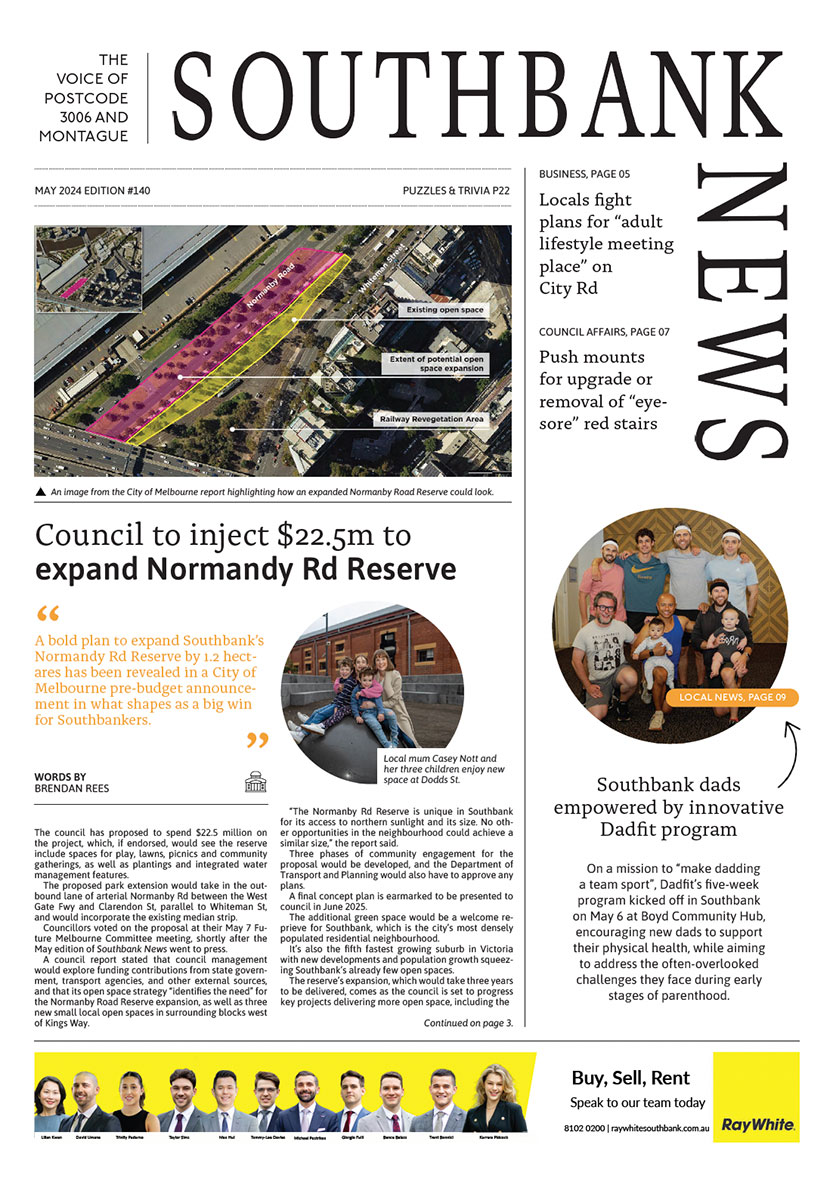
Owners’ corporations left in the dark about new COVID guidelines
By Katie Johnson
Despite Premier Daniel Andrews announcing the easing of restrictions on December 6, many residential buildings have yet to open their communal facilities out of fear of being fined.
Recreational areas, swimming pools and gyms are still subject to density quotas and cleaning protocols which many owners’ corporations (OCs) have found unclear.
Southbank Residents; Association (SRA) president Tony Penna said that OCs were frustrated that the impact of restrictions on residential towers had been ignored and that building managers had been left on hold for prolonged periods of time while trying to clarify the guidelines.
“You can ring [the Department of Health] three times in one day and get three different answers for the exact same question,” Mr Penna said.
During a Southbank Owners Corporation Network (SOCN) meeting with the Department of Job’s Industry Coordination and Recovery director Daniel Slusarek on December 8, members attempted to clarify the rules around communal spaces.
Mr Slusarek said that for gyms in residential buildings, patrons would still need to obey the four-metre square rule if staff were present, or an eight metre-square rule if the gyms were unstaffed.
To increase the number of patrons during peak times, he said that OCs could have a COVID-safe marshal to monitor the space, which could take the form of a resident who has undertaken the free online training.
“The reality here is it’s just balancing out the risks and if you do have a COVID-safe marshal who is actively monitoring and cleaning the spaces that provides risk mitigation which means you can have more people,” Mr Slusarek said.
“We understand that in multi-dwelling facilities there could be peaks and troughs in the use of the facilities so it’s up to the discretion of individual OCs to decide how they want to implement the guidelines.”
Gyms and pools will also require an electronic registration system so that there is a record of who has used the space, as well as thorough cleaning twice a day.
Across all common spaces in buildings and elevators, the two-metre square rule still applies.
“There is still a need to have electronic records management in residential buildings for contract tracing,” Mr Slusarek said.
Mr Slusarek also said the government was working on creating a dedicated channel of communication with residential buildings to ensure that the guidelines were clear and constantly updated.
“We’re in the process of opening up a specific channel of communication for multi-dwelling buildings and the government so that we can up the ante on simplifying the messages and getting them to you more often,” Mr Slusarek said.
Although many residents were eager to have full use of their building’s facilities back, Mr Slusarek said further easing of restrictions in residential buildings would be subject to health advice.
“The reality is that until we get a vaccine and even post-vaccine we’re going to have to continue to be vigilant,” Mr Slusarek said.
In July, the Department of Health and Human Services (DHHS) released guidelines for residents and OCs to limit the transmission of COVID-19 in multi dwelling buildings, which followed two roundtable meetings conducted by the Department of Job, Precincts and Regions.
Many OCs have already called for the guidelines to be urgently reviewed and updated •

La Camera celebrates 25 years at Southgate

New residential tower planned for heart of Southbank






 Download the Latest Edition
Download the Latest Edition